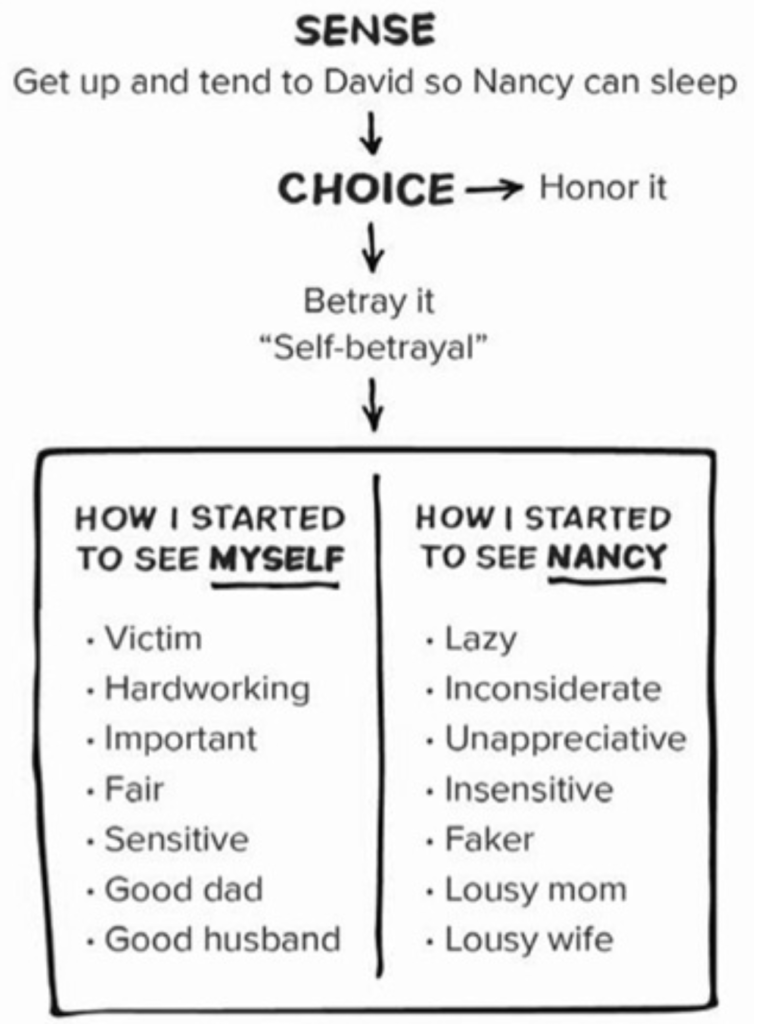In this session we continue through our work in “Leadership & Self Deception”. Over the past several sessions we have learned about our logical and emotional behavior with those around us. Today we continue with the topic of “How we get in the Box”.
Read through chapters 9 – 11
In this section Bud and Kate give many examples of self-betrayal

- Knowing the baby is crying and elect to do nothing and have the spouse “take their turn”.
- Stepping into an elevator and have the door close on someone urgently trying to get on.
- Knowing you had information that would help someone at work, but to decide to let them figure it out on their own.
- Committing to do some work but then no complete it as promised or tell the person about it.
- Knowing you acted ugly and should apologize but elect to talk yourself out of it or lie to yourself and say to yourself you will apologize later, only to forget.
The batltle we face is a real one….


Can you late to Bud’s example? Or do you have an example where you lived out a simiilar situation?
Any of these self-deceptive behaviors listed above seem common in your life? Do you have other examples of when you betray yourself by not doing what you know you should do?
Do you have any experiences lately where you were cognitively aware you were out of the box and certain people / situations ended up putting you in box, maybe even back in the box, and again? Did you find some relationships are more active with in & out of the box?
This week
Pay attention about the battle in your mind. How you have choices to make and how that box can get right in the middle of it and self-deception reigns. When you catch yourself, note how you feel in the battle of your mind as well as afterwards (when you do well at getting out of the box or when you fail and betray yourself).
